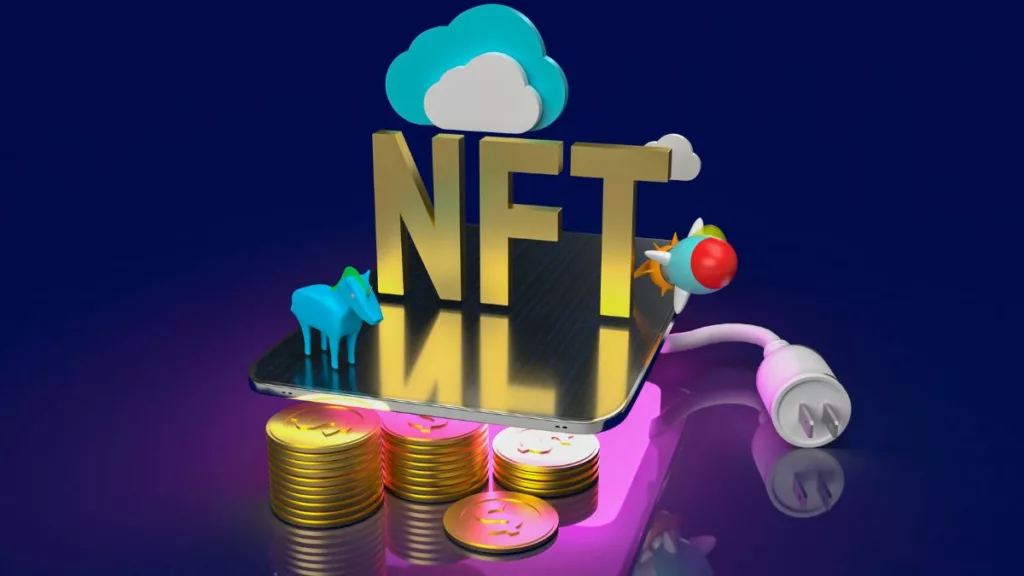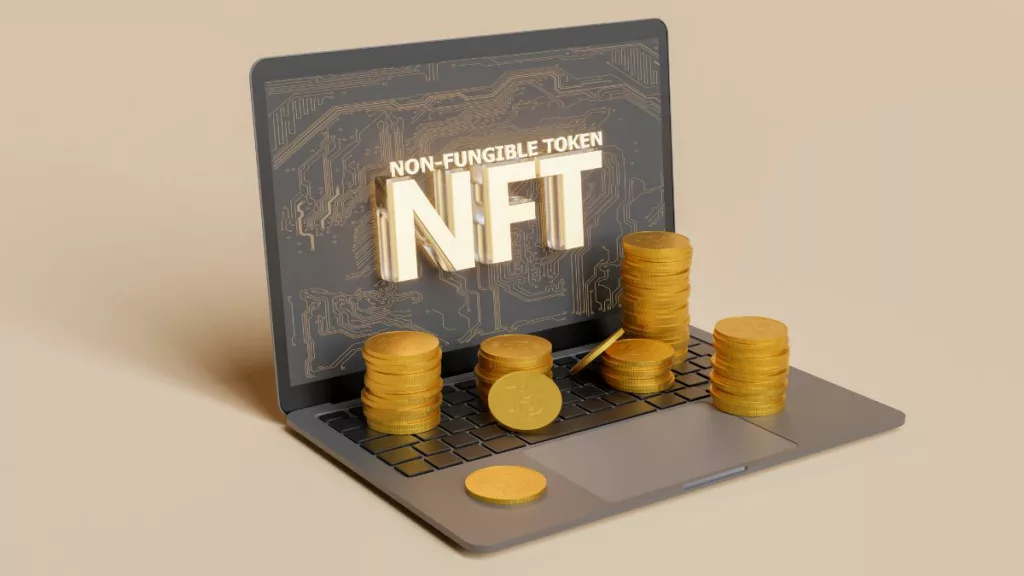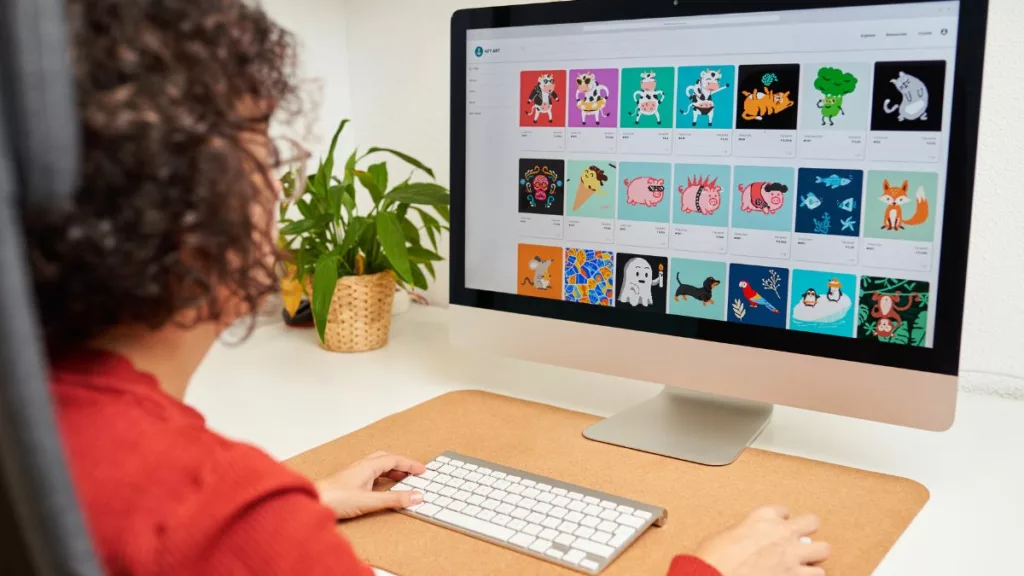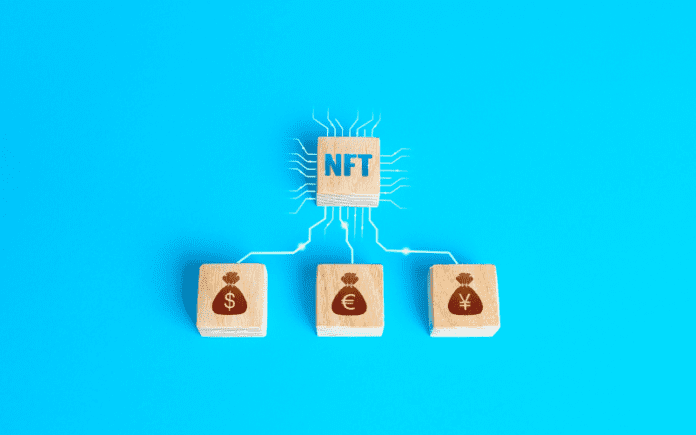Today we will dive a little into the world of contemporary art, understand what NFTs are, how to create them, and how to make money on NFTs.
If you spent the last year, not in the forest, then you probably came across the concept of NFT. NFT pictures are trumpeted literally at every step, they are promoted by celebrities, ordinary users are interested in them, and NFT tokens themselves can bring millions of dollars to their owners. Simple examples of this have long been before our eyes – the NFT token with the first tweet in Twitter history, made by the founder of the company, Jack Dorsey, was sold for almost 3 million euros, and the world famous GIF of a flying cat Nyan Cat went under the hammer for 600 thousand dollars.

Well, OK. Copyright has been around for a long time, and a meme may well become their object. Therefore, the situation with Nyan Cat can still be somehow explained in the old fashioned way. But how can you even sell a tweet? It’s all about those same NFTs. Today we will figure out what these tokens are, how to create them, and how to make money on NFT.
Table of Contents
What is NFT
Let’s start with a simple analogy that everyone will understand. Imagine that you are buying an apartment. Information about the purchase is entered into the state register, where the new owner of the apartment is recorded, the date of the transaction, the data of the apartment and your own data. This is essentially what NFT does.

The abbreviation NFT stands for Non-fungible token – non-fungible, or even simpler, a unique token. They first appeared back in 2017 on the Ethereum blockchain platform. True, unlike bitcoin, ether and other cryptocurrencies, NFT is a unique object with its own price, which has no analogues.
Remember our apartment example? The entry in the state register for the sale of an apartment is also unique, and you can estimate the apartment itself in absolutely any figure. Another issue is that the buyer must agree with your price, and only in this case the transaction will be completed. Also with NFT. It certifies that the object of the digital space belongs to you. And just like with an apartment, you can sell it to anyone at any price. More precisely, in fact, in most cases, you are not selling the object itself, but only a unique token that refers to it. But we’ll talk about this in more detail below.
It could be a Nyan Cat GIF or the first ever tweet. Or maybe a jpg image of Everydays: The First 5000 Days – a collage of 5,000 paintings by the artist Beeple, which this year was sold for almost $ 70 million. In fact, NFT is a digital analogue of a document certifying your right to an object. It contains data about the owner and the same set of rights that are provided by the token.
How to make money on NFT and why you need them
The demand for digital goods appeared long before the arrival of NFT. Many gamers have bought skins from CS: GO, Dota 2, and many other games. Moreover, the cost of such skins was often expressed in completely non-symbolic numbers. Of course, in those days, users did not buy NFT, but the program code of the skin, but this almost does not change the essence.

Even more, money is spent where collectibles are concerned. Here you can remember the most expensive NFTs. This is the already mentioned collage Everydays: The First 5000 Days worth almost $ 70 million, and the T206 Honus Wagner baseball card, which went under the hammer for $ 3.25 million, and the record-breaking project The Merge, which brought its author 91.8 million dollars.
Imagine you have a unique baseball card. Or maybe you paint, collect stamps, or create game characters. All your creativity can be sold digitally using NFT. Although the application of NFT itself is much broader. Unique tokens can also be useful in work tasks. For example, they can certify your right to receive unique information or access to a closed club.
But to make money on NFT, you don’t have to create something new. As with any asset, the price of an NFT token for a specific object changes over time, and you may well invest – invest your money in a project at the bottom of the market, and sell at the top, thereby earning on the price difference. But, as with any investment and speculation, there are no guarantees that you will be able to make money on such actions. Investing is always a risk and NFT is no exception.
Another example of a possible use of NFT is buying digital tickets for a concert, football match, or any other event. They can be used as souvenirs or, for example, a celebrity’s autograph. There are tons of NFT applications, and the potential is really huge.
At the same time, like any blockchain project, NFT is not tied to any one server. All token transactions are distributed across hundreds of thousands of systems around the world. Any operations with NFT are recorded by each computer on the network, and anyone can view the data about them. Basically, by buying an NFT, you are claiming your right to a digital object to the whole world, and this information will remain online forever.
NFT pitfalls
The problem is that the use of NFT does not exclude the possibility of fraud. Despite the absolute transparency of working with tokens, their creation does not at all guarantee that the author actually owns the property object. Moreover, this situation happens quite often.
In addition, it should be taken into account that a variety of rights of the token buyer can be spelled out in the NFT. In other words, instead of the ownership of an object, it can only speak of the possibility of using it, and sometimes even without the right to profit from such use. Although, of course, this is okay if the NFT is bought for this, and, in fact, you just want to leave a memory about yourself in the digital space.
Most NFT tokens traditionally refer to a specific object located on a specific server. But what happens if you buy NFT and the server moves to another domain or goes offline altogether. In this case, the NFT token will no longer refer to the object you purchased. And it’s good if such a situation arises due to an accidental failure. In fact, it can be quite malicious acts.
Another point concerns possible plagiarism, which NFT does not insure against. Yes, once created, an NFT token cannot be counterfeited or stolen. But do not forget that this is not a physical, or even a virtual object of sale. This is just the most secure certificate of ownership of a given object. Therefore, an attacker costs nothing to copy the object bound to the NFT and create his own token on this copy. Moreover, a copy on the Internet is a very loose concept.
A small insurance against the purchase of NFT for a non-original object can be the use of specialized online sites that take over the copyright protection of the content creator. But even they cannot give a full guarantee here.
How to create an NFT
So we come to the most interesting part – how to create an NFT token. Any specialized platform like OpenSea can be used to create an NFT. In addition to registering there, you will need a wallet in the Ethereum system and, in fact, digital content to which you will bind a token.
The algorithm for creating an NFT depends on the platform you choose. But in general, for this you need to log in to the system through the Ethereum wallet, create a collection and upload the necessary images, animation, music or even 3D animation to it. For example, the same OpenSea supports files in JPG, PNG, GIF, SVG, MP4, WEBM, MP3, WAV, OGG, GLB, GLTF formats and weighing no more than 100 MB.
After that, you need to add a description and a link to the object, as well as set the basic parameters of the token and click the “Create” button. The token is sent for verification, after which it can be sold.
As for the token itself, its non-fungibility is ensured by a unique combination of the object to which it is attached and your identifier in the system or a unique key that signs any token passing through your account. Actually, it is thanks to such an individual signature that any user can trace the entire path that NFT has passed since its inception, and all the owners of this certificate.
In addition to your ID and token object data, there are a number of parameters inside the NFT that describe what the owner of the certificate can do. The main ones are resellable and copyright transfer. The first is responsible for the possible resale of the token, and the second is responsible for the transfer of copyright to the object to its owner. Moreover, if copyright transfer has the false status, then, in fact, you buy only your place in history and the possibility of reselling the token (if the resellable parameter allows it). There is no way even to copy the file attached to it.
Conclusions
Many users, to be honest, and some journalists mistakenly equate NFT with a digital object. But in reality, the NFT is a digital certificate denoting your rights to an image, animation, music, or any other object. Moreover, such a certificate does not always mean the transfer of exclusive rights to content to you.
For example, with the help of an NFT token, you can give you the right to listen to some tracks, attend a certain event, or simply write your name in the history of a meme. In this case, you will not receive any ownership of the object itself. There are also reverse situations when NFT certifies exactly the fact of purchasing exclusive rights to an object. Moreover, in recent years, there have been more and more situations when with the help of NFT not only digital assets are sold, but also quite tangible things and even intellectual property for all kinds of know-how.

